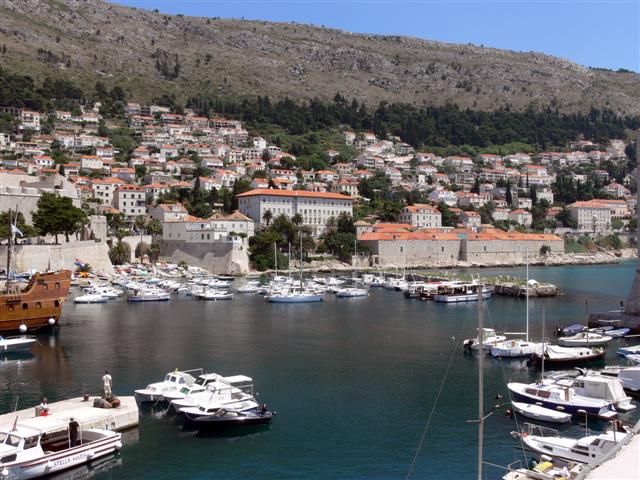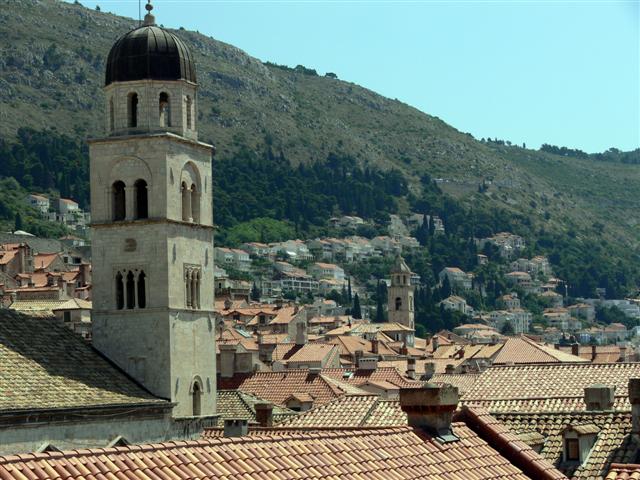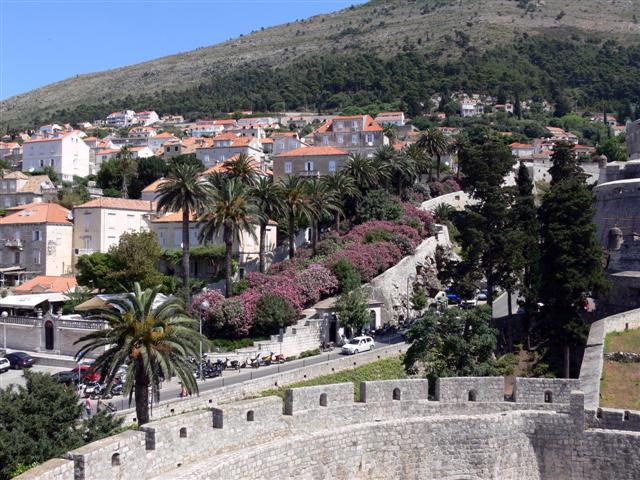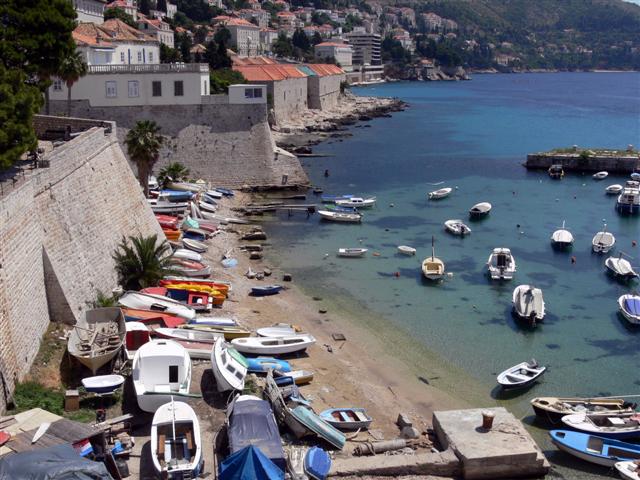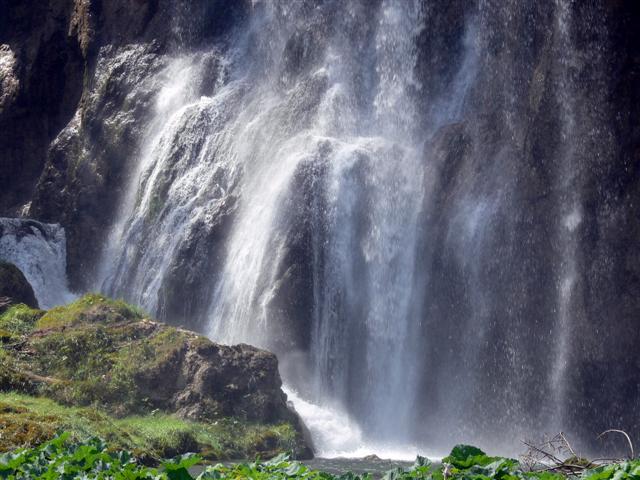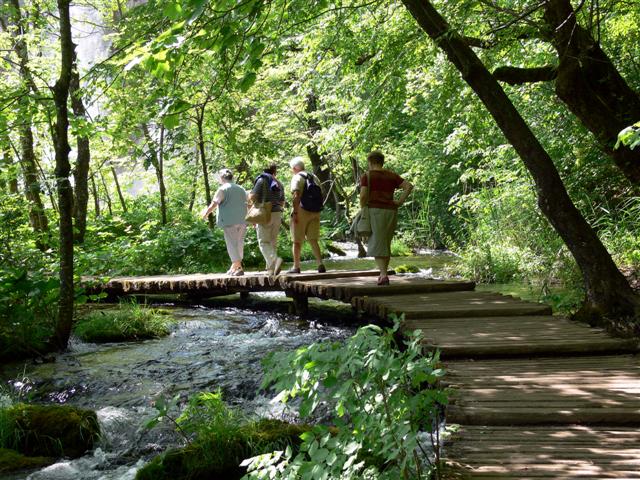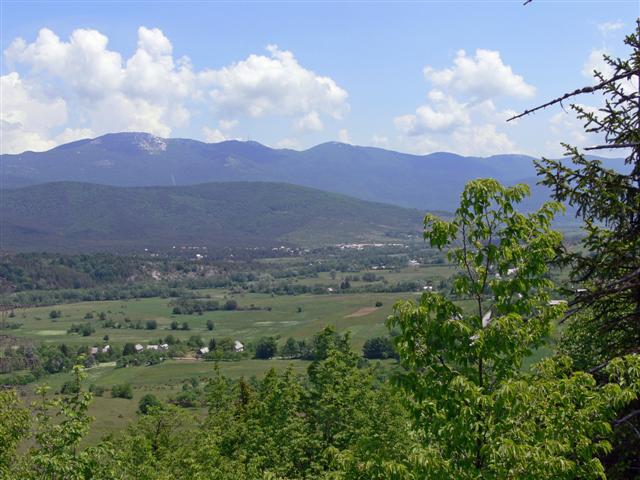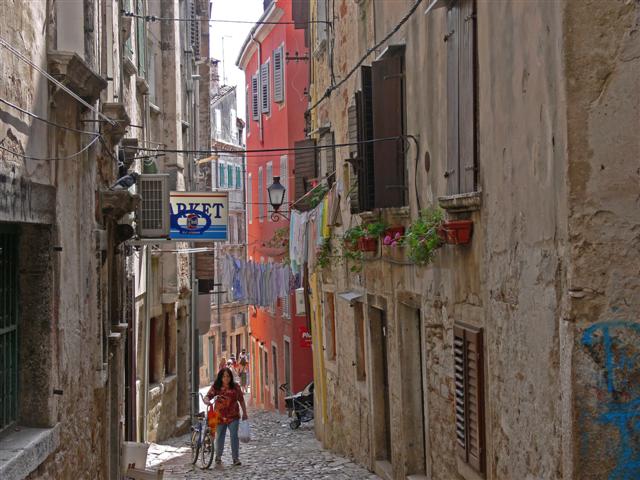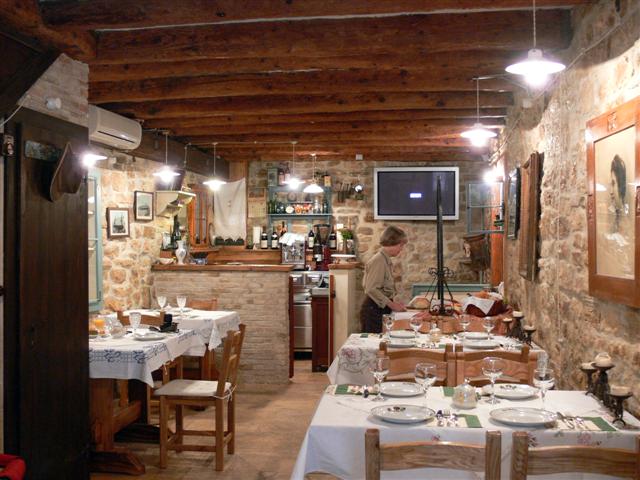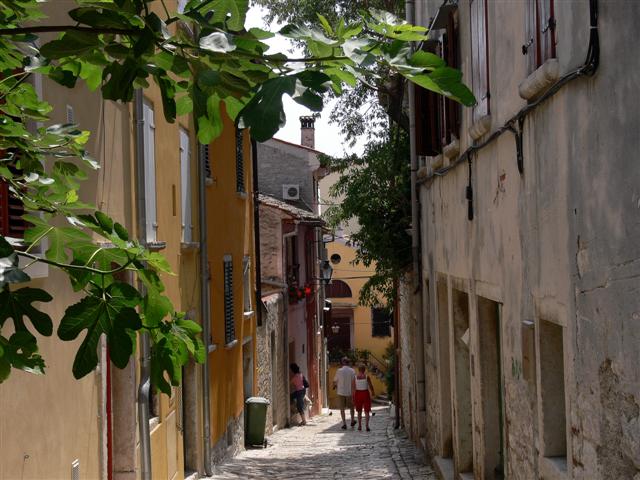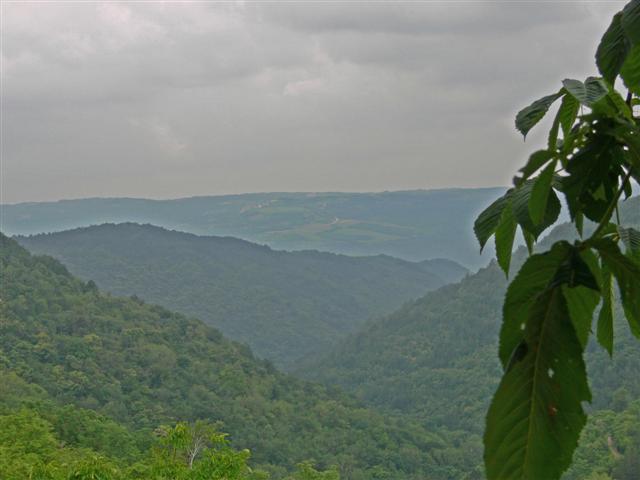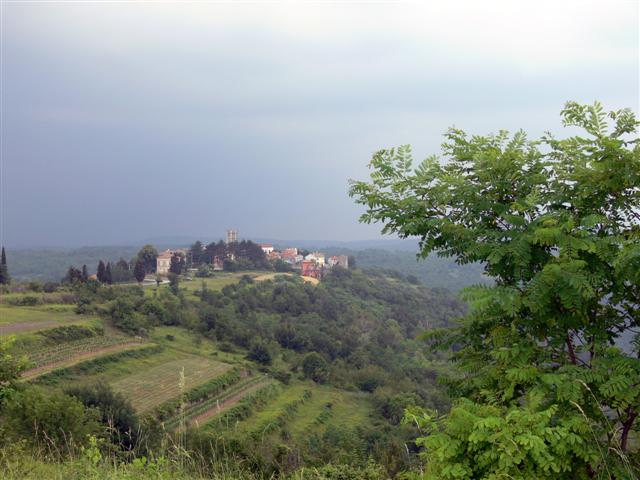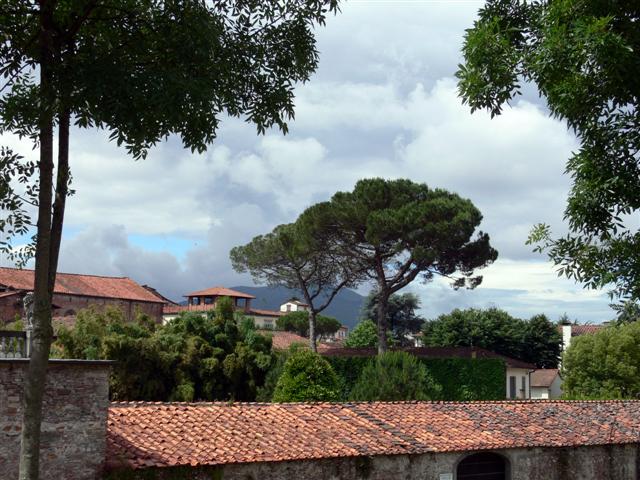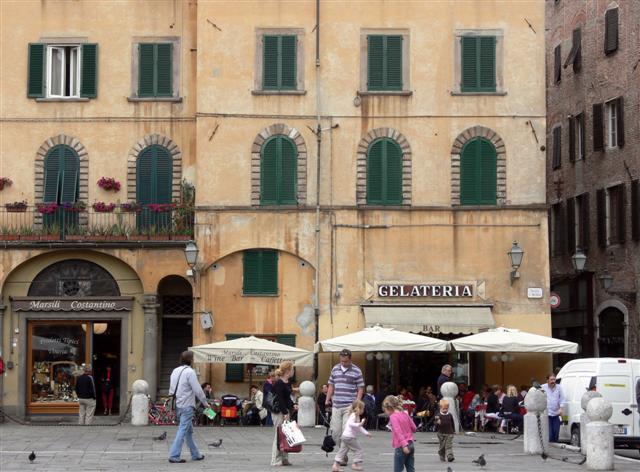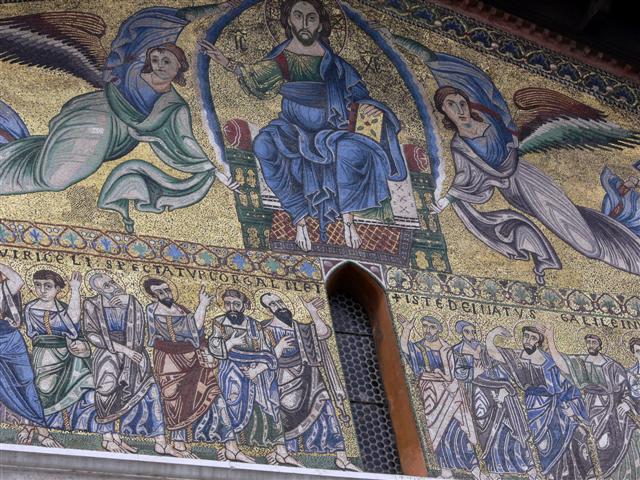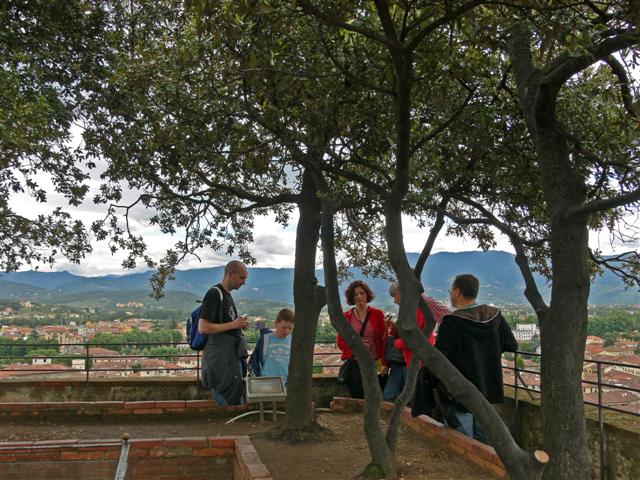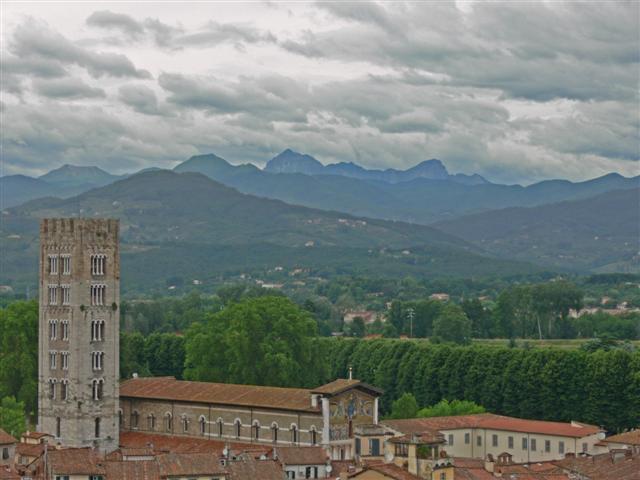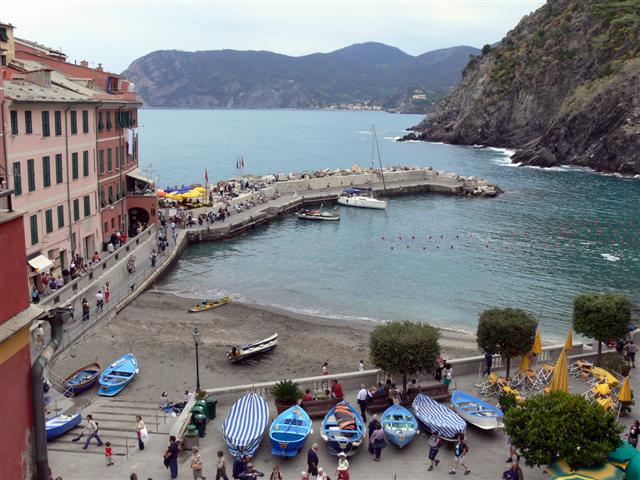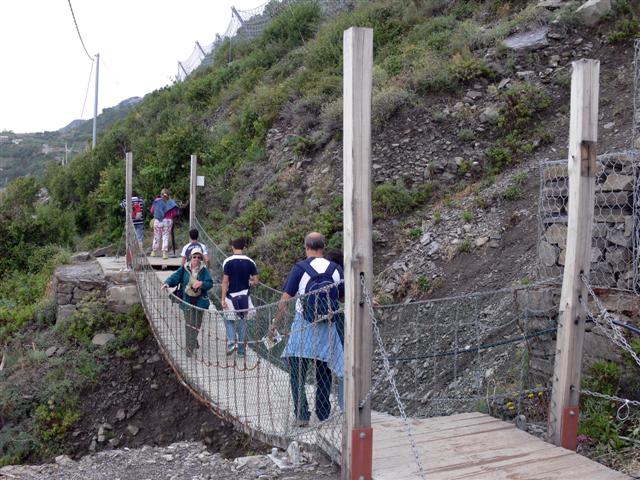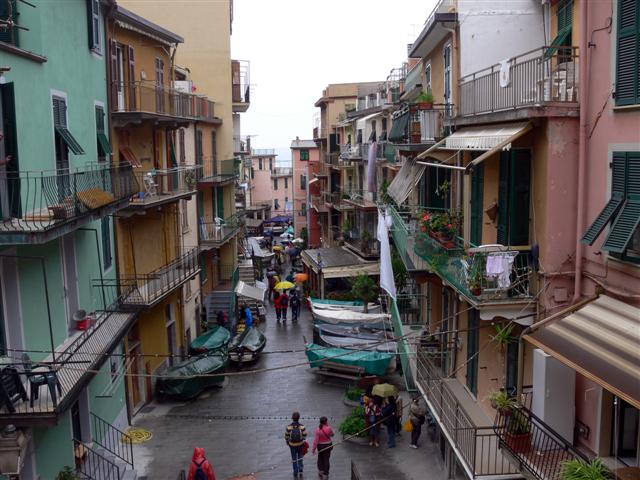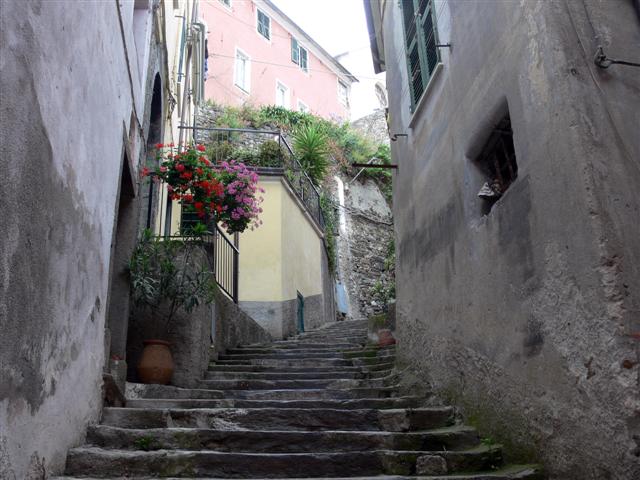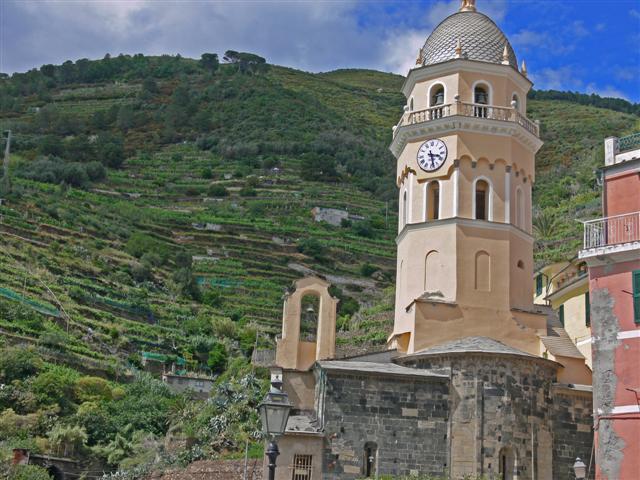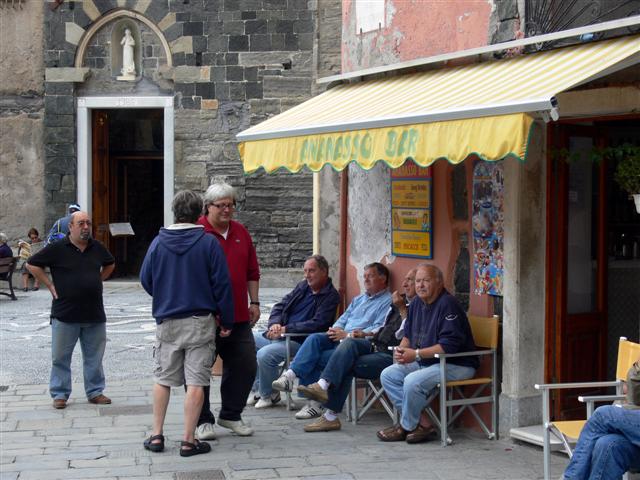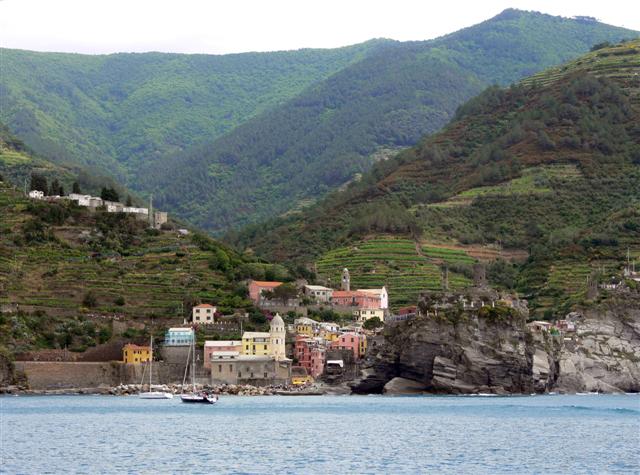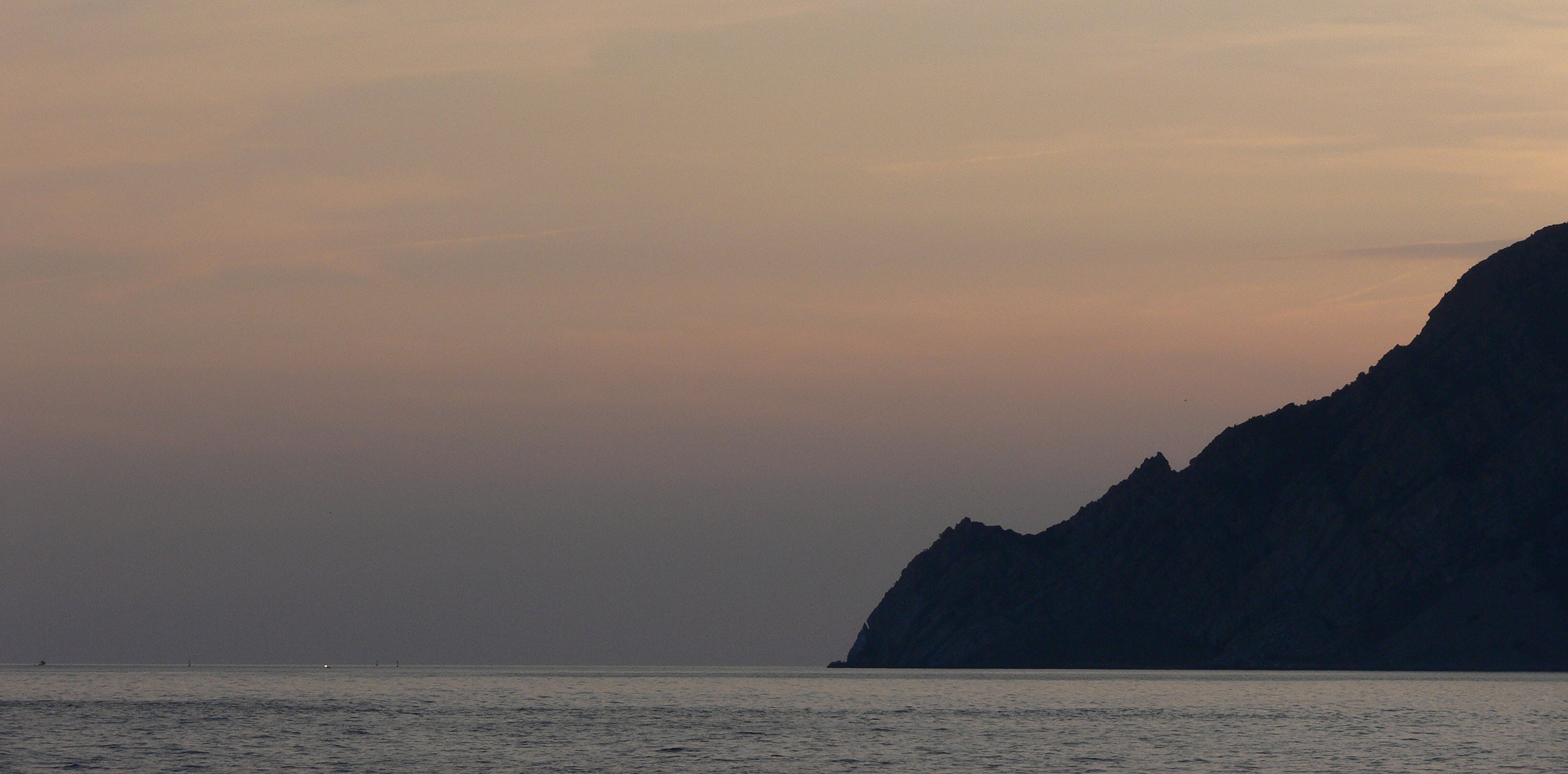Mediterranean Spring
Croatia and Northern Italy
Harlan Hague
Like foods and fads, travel destinations are constantly being discovered and rediscovered. Western Europeans have known for years that Croatia is a delightful place to visit, but North Americans have been visiting the country in numbers only in recent years.
Croatia burst on the world news and public consciousness during the 1990s. As communist influence in Eastern Europe waned, Yugoslavia disintegrated violently into its constituent parts. Croatia became independent in 1995 after a four-year war with Serbia, which opposed the breakup of Yugoslavia, and Croatia’s own Serb minority who favored union with Serbia.
The world was horrified when Dubrovnik, the jewel of the Dalmatian coast and a UNESCO World Heritage Site since 1979, was bombarded by Serbian forces. The city is now completely restored and is the most popular destination in the country. A skeptic might describe old Dubrovnik as a museum with restaurants, but this simplistic view overlooks the charm and historical importance of the city.
My wife, Carol, and I arrived in the afternoon. We had missed the airport bus, whose departure from the airport is tied to arrival times of flights, because we were busy reporting the non-arrival of Carol’s checked bag. We were forced to take a taxi. Marc, our landlord, a Brit expatriate and long-time resident, met us at the Ploce gate—vehicles do not enter the old city—and led us to our apartment. We told him why we were late.
“What airline did you fly?” he asked.
“British Air”.
“Thought so”. Apparently British Airlines has acquired a reputation for this schedule.
After checking into our convenient, spacious lodging at Karmen Apartments, we immediately began exploring. Our apartment was inside the walls of the old city, just steps from Luza Square and the main pedestrian thoroughfares and the Wine Bar, which became my favorite. I hasten to add that in evaluating a restaurant, I am more impressed by ambiance and location than food. The covered outside dining area of the Wine Bar has a great view of the harbor, and the candlelight and good wine completed the picture. Oh, the food was good as well.
Next morning, we had cappuccino and pastries at a café on the Placa, the wide promenade that divides the old city into northern and southern regions, with a view toward the pretty tower of the Franciscan Monastery and Pile Gate. At the other end of the Placa, the 15C Bell Tower rises above Luza Square and the Wine Bar. Carol decided that the tower looked like the Campanile at UC Berkeley, her alma mater.
After breakfast, we climbed the steps near Pile Gate for the walk around the top of the old city wall (US$20), a must. The views of the city and coast are magnificent. Schedule an hour and a half . This includes time for a look inside the round Tower Minceta, the strongest point for defense on the land side, short visits to the Fortress Revelin, which guards the eastern gate, and other forts along the walls. Also time for dawdling, staring at the sea, and an ice cream.
Boat trips along the coast and to the islands are offered from the harbor near the Wine Bar, but we declined in favor of more wandering. The narrow cobblestoned streets and alleys were most inviting. We visited the Franciscan Monastery and the Gothic-Renaissance Rector’s Palace, once a government building, now housing the History department of the Museum of Dubrovnik. We were surprised to find a Serb Orthodox Church—there aren’t many Serbs in Dubrovnik—and stepped inside. We toured a historic synagogue and the Dominican Monastery. We were almost alone in the beautiful Sponza Palace, once housing state offices, now the repository of the city’s archives. We had lunch at tiny Pizzeria Baracuda, one of scores of pizza restaurants that are tucked into alleys all over the city. Quite tasty, and I don’t usually eat pizza.
We left Dubrovnik in early morning. We walked in darkness from our apartment to Ploce Gate where our prearranged taxi was waiting. As we drove up the hill outside the city, we looked back, the first hint of dawn casting pink shadows through the streets. We decided that we would return.
Our next destination was Plitvice Lakes National Park, Croatia’s top natural attraction. I had tried to arrange other means to get there from Dubrovnik—no rail, too long by car, bus impractical—so we had to fly to Zagreb, pick up a rental car and drive about three hours on the Zadar/Split highway to the park. We arrived in early afternoon and checked into Hotel Plitvice inside the park.
 Plitvice
Lakes National Park, a UNESCO World Heritage Site, is a wonderland of small
lakes, waterfalls, and watercourses that cascade down a wide, wooded canyon.
Most visitors take the
convenient park buses to the top of the canyon and then stroll down on
walkways of roughcut timbers. Small ferries transport walkers on the largest
lake. A glass of good Croatian wine on the hotel veranda was a welcome end
to a most satisfying day.
Plitvice
Lakes National Park, a UNESCO World Heritage Site, is a wonderland of small
lakes, waterfalls, and watercourses that cascade down a wide, wooded canyon.
Most visitors take the
convenient park buses to the top of the canyon and then stroll down on
walkways of roughcut timbers. Small ferries transport walkers on the largest
lake. A glass of good Croatian wine on the hotel veranda was a welcome end
to a most satisfying day.
From the park, we drove through a pretty, green countryside toward the coast. An hour or so west of the park, we saw a number of isolated farmhouses and small clusters of houses and farm buildings, empty and boarded up, some beginning to sag. A church was empty and locked. I speculated that the national park was being expanded, and the residents had been moved away. Not so, I learned later.
Dario met us at the parking area in Rovinj on Istria’s west coast. Cars cannot enter the old town where we had reservations at his Casa Garzotto. Dario took our bags on his motor scooter to his place and returned to the market at the edge of old town where we met him. We checked in, then walked the almost deserted streets as night began to fall. The magic of a place, seen for the first time at twilight, is private and permanent. It is never replaced by the reality of noon.
But Rovinj, even at noon, is a joy. The ancient, red-roofed buildings on narrow, cobblestone byways, hardly streets, look out on a wide harbor where fishing and pleasure boats are tied. The best view of the town and harbor is from the top of the Venetian tower of St. Euphemia Church. The climb is not for the faint-hearted or any who suffer from vertigo. The steps are rough planks with open views of the bottom of the tower. Don’t be startled if the bells in the tower sound when you are on the stairs or at the top.
Dario is a friendly, gracious host and a mine of Croatian history and culture. We asked him about the empty villages and farmhouses in the valley near the park. Ethnic cleansing, he said. Serbs had lived there. I was surprised. I had heard about ethnic cleansing in Serbia, but not in Croatia. Croatia had the ear of the west, he said, and better propaganda.
We had breakfast in the pretty dining room on the ground floor of our B&B. Days, we walked the streets of Rovinj, stopped for cappuccino and watched the boats in the harbor. Evenings, we had wine and dinner at restaurants on the harbor. Afterwards, we walked along the waterfront, watching the sunset.
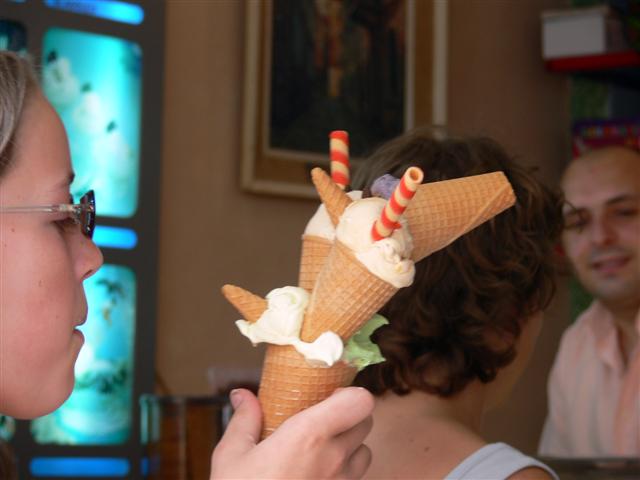 One day, we drove to Porec on the coast north of
Rovinj. We walked along
the waterfront and visited the 6th century St. Euphrasius
Basilica, one of Europe’s most notable early Christian churches and a
repository of wonderful Byzantine art. We climbed the tower for a panoramic
view of the town and harbor.
One day, we drove to Porec on the coast north of
Rovinj. We walked along
the waterfront and visited the 6th century St. Euphrasius
Basilica, one of Europe’s most notable early Christian churches and a
repository of wonderful Byzantine art. We climbed the tower for a panoramic
view of the town and harbor.
Porec was interesting, but too crowded and too busy. We fled inland to visit medieval hill towns. This area of Croatia was under Venetian rule from 1358 to the end of World War II when Italian hegemony ended, and the area officially became part of Yugoslavia. Italian residents withdrew, and the towns were emptied. They are still in the slow process of reoccupation by Croats.
Groznjan was our first stop, and it is a gem. The village has become popular with artists and musicians. There are a number of galleries that feature paintings and sculpture. We had lunch at a nice, shaded restaurant in the small main piazza. Afterwards, we walked around the periphery of the village for the sweeping views of the countryside below.
We drove to nearby Oprtalj. This picturesque little hill town still
has not recovered from the post-WWII depopulation. Many of the structures
are empty, and weeds grow from cracked cobbles. But a number of buildings
have
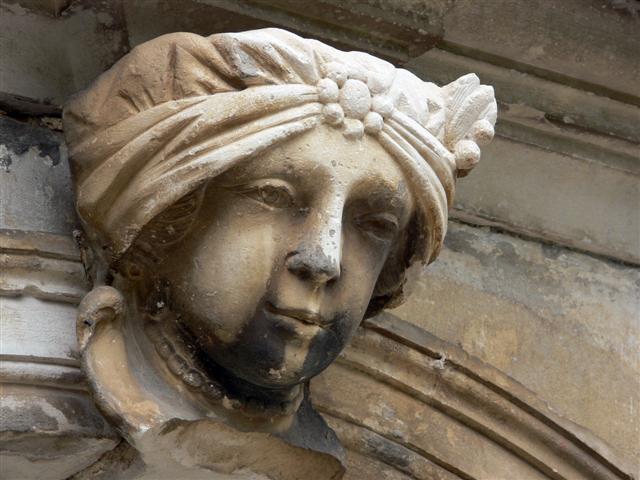 been
restored, and small gardens are filled with blossoms. The village is more
romantic than melancholy. Residents will rediscover it as it already has
been by tourists.
been
restored, and small gardens are filled with blossoms. The village is more
romantic than melancholy. Residents will rediscover it as it already has
been by tourists.
On our departure from Rovinj, I left the keys to our rental car with Dario. A National auto rental employee from Pula would come to Rovinj to fetch the car. The original booking had me turning in the car in Porec, but that office had not yet opened.
In early morning, Carol and I walked to the bus station where we boarded the comfortable bus for Trieste. En route, we passed through a small strip of Slovenia. Slovenian officials did a cursory walk through the bus and stamped our passports. I wondered whether we could count Slovenia among our countries visited. I have always held that one cannot count a country if one does not leave the airport during a plane change. But a bus? When one’s passport is stamped? Hmm.
In Trieste, we began our train odyssey. Trieste to Venice, to Prato, to Lucca. Three trains without a hitch. Rain began to fall as we walked from the train station in the gathering gloom toward the old town walls. Not very promising, Carol said. After passing through the wall, she saw a sign that identified a bright, pink house as Puccini’s home. She brightened immediately.
We found Albergo Diana at dusk and checked in. After depositing our bags, we walked the darkening streets as lights were beginning to come on. Magical. In future, we must remember to schedule our arrivals at this hour.
Old town Lucca is walkable. After a cappuccino and pastry at a nearby café the next morning, we set out. Biking the broad brick-faced earthen walls is popular, but we opted to walk. But only for a short distance. Since the city lies on a flat plain, the view from the wall is not so dramatic as, say, Dubrovnik, which is built on a hillside that slopes gently toward the sea. We left the wall and walked in the old town.
We strolled Via Fillungo, the pedestrian main street,
crowded mostly with locals and Italian tourists. Near the northern end of
the street, we walked through an arch into Piazza
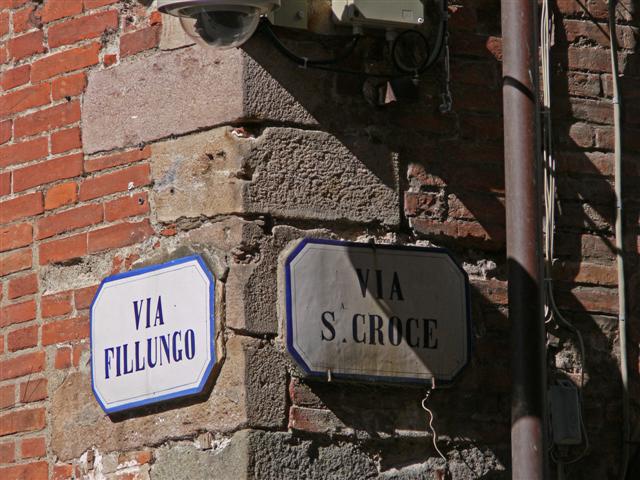 Anfiteatro,
which retains the circular shape of the ancient Roman amphitheater, but
which now is populated by shops and small restaurants. We stopped for a
coffee at a shaded outside table.
Anfiteatro,
which retains the circular shape of the ancient Roman amphitheater, but
which now is populated by shops and small restaurants. We stopped for a
coffee at a shaded outside table.
We visited a host of churches. It seems that there was a church for every dozen Lucchese. San Martino Cathedral, begun in the 11th century, is a delightful mix of architectural styles, with a Romanesque façade and sculpture, Renaissance paintings, Gothic arches and 19th century stained glass. On the right side of the nave lies the striking tomb of Ilaria del Carretto, the wife of Paolo Guinigi, who ruled Lucca in the early 15th century. Young women believe that rubbing the nose of the reclining bride can help them find a boyfriend. The snub nose is evidence of a host of lonely girls. The Cathedral Museum, housed in an adjacent building, is worth a visit. A combined ticket of €6 gains admission to the tomb, the museum and San Giovanni Church.
Nearby San Giovanni attracted us for two reasons. Excavations beneath the church have revealed the foundations of Roman houses and baths, ancient churches and other structures. Elevated walkways permit close viewing of the ruins. Most interesting. On leaving the church, we bought tickets for a performance of arias from Puccini and Mozart operas and returned to the church that evening.
On another day, we went to Puccini’s house, now a museum, but it was closed indefinitely. Carol was distraught.
Any visitor to Lucca at some point will be compelled to investigate the tower with trees growing on its summit. The 227-step climb to the top of 14th century Guinigi Tower is worth the effort. The 360° views of the town and distant hills are most rewarding. The tower is the only one remaining of the four that once topped the Guinigi mansions.
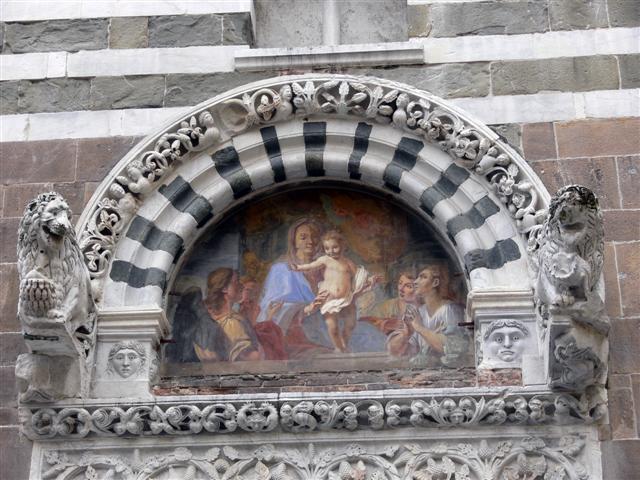
Another Guinigi namesake is the Villa Guinigi. Built as a family residence by Paolo, the villa is now a museum housing sculptures, paintings and artifacts, notably those of the Liguri Tribe, the ancient inhabitants of the region. The holdings are interesting, though there is no documentation in English, except the multi-lingual signs prohibiting photography. The museum would be more rewarding but for the dour staff that seem to resent your presence and docents who direct the visitor's route. And no backtracking! Maybe they fear vandalism. They certainly could not be fearful of crowds since we were almost alone in the museum.
We spent our last hours in Lucca as we had begun, strolling Via Fillungo, stopping for a gelato and, later, tea at an outside table on a piazza. We liked Lucca.
We left Lucca at noon by train, bound for Cinque Terre. The trip was relatively short, with changes at Pisa and La Spezia, and we arrived in Vernazza in late afternoon.
The rain began during our short walk downhill from the station to our hotel, Albergo Barbara. Then the climb of seventy-five steps—Carol counted them—up to our room on the top floor. The room is spartan, adequate, with the best view in Cinque Terre. The small main piazza was directly below our window. It was filled with colorful fishing boats, ringed by multicolored umbrellas shading café tables, the church adjacent to the square, and beyond, but a stone's throw, the beach, the harbor and the sea. Beautiful. More than once during our four days in Cinque Terre, I sat at this window with a cup of tea or glass of wine, reading or daydreaming.
We planned to walk the next day. Cinque Terre is a national park, and hiking on the maintained trails is a popular pastime. Fees for use of the trails range from €3 for a one-day Hiking Pass to €20.60 for a one-week Cinque Terre Card, which includes park entrance fee, hiking, and local trains and busses. The Card is also available in 1-day and 3-day versions.
Before setting out, we stepped into a tiny coffee shop near our hotel for a cappuccino and pastry. We had hardly sat down when a storm broke, with thunder and lightning and rain falling in sheets. It was wonderful.
We decided to walk another day. We took a train north to Monterosso where we walked up the gently sloping seaside promenade, looking down at a WWII German pillbox on the cliff face and back at the colorful buildings on the seafront. Retracing our steps, we strolled in the narrow, winding lanes of the old town. Passing a huge lush bougainvillea that hung over the walkway, we stepped into the Church of St. John the Baptist, looking for all the world like an ecclesiastical convict with its marble horizontal black and white stripes. After a pleasant lunch at an outdoor café—of course the rain had stopped now that we weren’t walking—we boarded a train for Corniglia, a few miles south of Vernazza.
Now Corniglia is in Cinque Terre, but it is different from the other four towns. Unlike the others, tiny Corniglia is atop a hill, overlooking the coast. To reach the town, one must climb a steep staircase of about 400 steps. I decided that we should instead walk up the winding road to the top. After a short distance on the steep road, we backtracked and waited at the train station for the park bus that drove up that same road. Good decision.
Only about a half hour is required to visit the village. There are a few small restaurants, a wine shop, a gelateria, a shop selling picnic supplies and a few others offering trinkets and t-shirts. At the top of the town, there is a viewpoint where one can look inland at the terraced hillside vineyards and the beaches far below.
We had cappuccino and cake at a terrace café, with a sweeping view of the coast and train station below, then opted to walk down the steps. Near the bottom, we stopped to look at some paintings that were offered by the artist. Carol bought a small watercolor. We took the train back to Vernazza where we had dinner, walked on the pier and watched the sunset. We ended with tea at a beachside table in the piazza.
Next day, we were determined to hike. After a light breakfast, we took the train to Corniglia, intending to walk from the station to Manarola and on to Riomaggiore. One can walk on the maintained trails between all of the five villages, and this stretch was billed as the easiest segment. Undoubtedly that is why we shared the trail with many others. The path hugged the hillside, with the waves alternately lapping and crashing below.
Before we reached Manarola, a light rain began falling, and our hiking was finished. We walked the streets in tiny Manarola in the light rain. The village cascades down a ravine and is quite picturesque. At the top, we stepped into the 14th century Parish Church of St. Lawrence.
From Manarola, we took the train to Riomaggiore where
we walked up the steep street, passing gelato and grocery shops and a
bakery, to the top. We looked inside the early 14th century
parish church of San Giovanni Battista. From here we followed a path that
wound above the town, beside vineyards
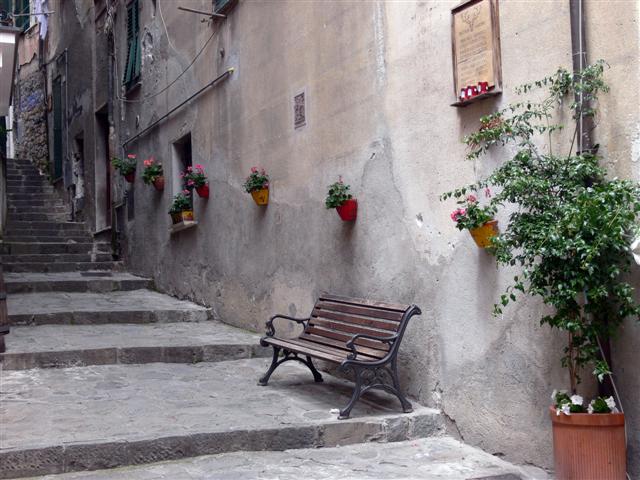 and
lemon trees, with wonderful views of the town and coast. Afterwards we made
our way back to the station below and took the train for Vernazza.
and
lemon trees, with wonderful views of the town and coast. Afterwards we made
our way back to the station below and took the train for Vernazza.
The rain had ended, and the sun shone through dark clouds. I sat at a shaded café table in the little piazza with a cup of tea, watching a wedding party gathering. The bride was American, a local told me, who wanted to be married in Vernazza because she loved it so much. I can understand that. The ceremony was short, and we went inside the church at the end to see guests taking away armfuls of flowers. Outside the rain began falling, and we went up to our room.
From our window, we saw the bride, skirts hiked up and flying, running in her high heels to the pier, followed by the anxious groom, trying to hold an umbrella over her. No doubt she had decided long ago that on her wedding day in Vernazza in Cinque Terre she was going to walk on the pier at sunset, and so she was determined to walk on the pier at sunset, rain storm notwithstanding.
Our last day was a kick back day in Vernazza. The morning was bracing, and we climbed through narrow walkways to a terrace on the north side above the town. Carol continued higher to the cemetery while I sat and tried to take in the fantastic view of the harbor and the sea.
The sun was hot now. I strolled down the hill, and we met at the piazza. I had no sooner paid for our tea when we noticed that the ferry at the pier was loading passengers. We had talked about taking a ferry, but had made no plans. We looked at each other, grabbed cameras and caps and ran. Carol hoped it was going to Corniglia; I didn’t care.
Upon departure we learned that the ferry was bound for Monterosso. After a pleasant cruise, we debarked and walked around the village for a couple of hours, enjoying the same sights and taking the same pictures that we took on our first visit. We had lunch and took the train back to Vernazza.
We were lazy that afternoon, reading and enjoying a glass of wine, then dinner at a café in the piazza just below our room. Afterwards, we walked out to the pier and watched the sunset. A relaxing end to a most enjoyable holiday.
We caught an early train the next morning, bound for Milan Malpensa airport. We changed trains at Monterosso, endured an unusual delay and arrived in Milan an hour late. I learned too late that one should not buy tickets for the airport bus in the train terminal. It is a waste of time. Instead, go from the train station to the lobby, turn left and then straight ahead to the exit. Outside, turn left, and walk about fifty yards to the bus queue. There are at least two bus companies. Buy a ticket on the spot for the bus scheduled to leave next. The moral for this day: always include a large time cushion in your travel schedule. Happily, we did and made our flight.
Accommodation and restaurants:
In Dubrovnik: Apartments Karmen, http://www.karmendu.com/index.html, €95 per night, plus 30% for short stay, total €123.50. En suite, kitchen facilities, comfortable, inside the city walls, one minute to the main promenade. Highly recommended. We liked the Wine Bar restaurant that looks out over the harbor.
Plitvice National Park: Hotel Plitvice, http://www.np-plitvicka-jezera.hr/cpage.aspx?page=pageHotels.aspx&PageID=127. €96, includes breakfast. Inside the national park, five minute walk to main entrance and park buses. Nice terrace. Recommended.
Rovinj: Casa Garzotto, http://casa-garzotto.com/index.html. €100, including breakfast. In old town, a short stroll to all attractions, including the waterfront. Great local ambiance, pleasant breakfast room, good service, comfortable en suite bedroom. Highly recommended.
Lucca: Albergo Diana, http://www.albergodiana.com/centro_engl.ht.
€67 and €93. We liked the Albergo Diana, with one caveat. We stayed the
first
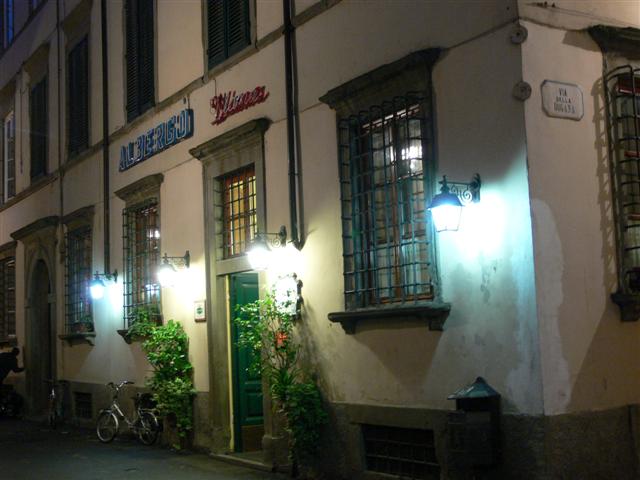 night in the original building (€67) and the other nights in the Annex
(€93). We preferred the first room. It was larger and quieter, with a better
view, than the annex room, and cheaper. The Annex is newer. Recommended. We
liked the restaurant Locanda di Bacco on via San Giorgio.
night in the original building (€67) and the other nights in the Annex
(€93). We preferred the first room. It was larger and quieter, with a better
view, than the annex room, and cheaper. The Annex is newer. Recommended. We
liked the restaurant Locanda di Bacco on via San Giorgio.
Vernazza: Albergo Barbara, http://www.albergobarbara.it/filosofia.html. €80, en suite double room at the top with sea and harbor view. Ask for it by name. Simple accommodation, but the best location and prospect in Cinque Terre. Book early. It fills, especially the upper room with the harbor view. The hotel is recommended by Rick Steves, and the hotel web site features a picture of the proprietors with Steves.
We were fortunate in booking an American Airlines award flight for this trip. We flew from San Francisco to Gatwick, where we transferred to British Air, an American partner, for the flight to Dubrovnik. After traveling by car and air in Croatia, bus and train and a holiday in northern Italy, we flew BA from Milan to Heathrow, where we again broke the journey, thence on American to San Francisco. I shudder even to contemplate the cost of this flight schedule if we had paid cash for it.
The author will be happy to respond to comments and questions.
